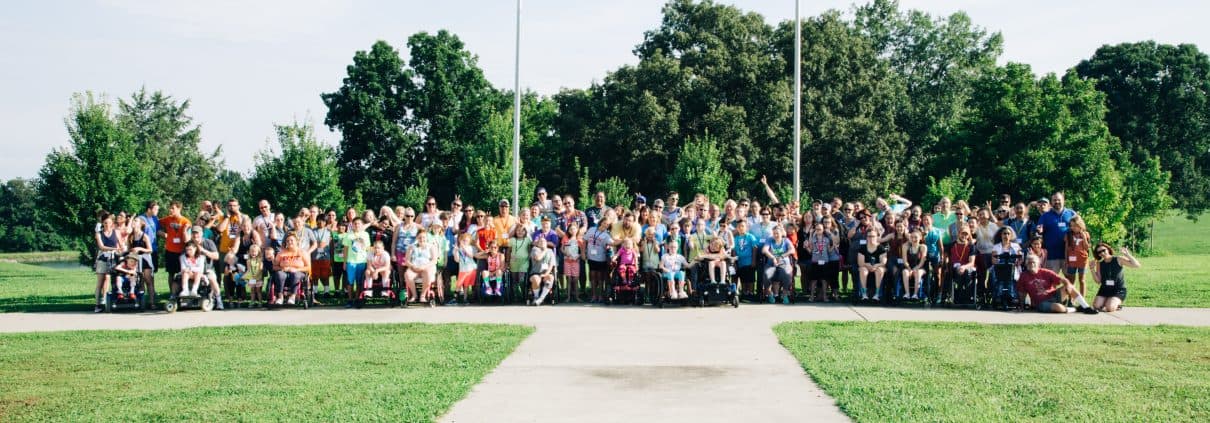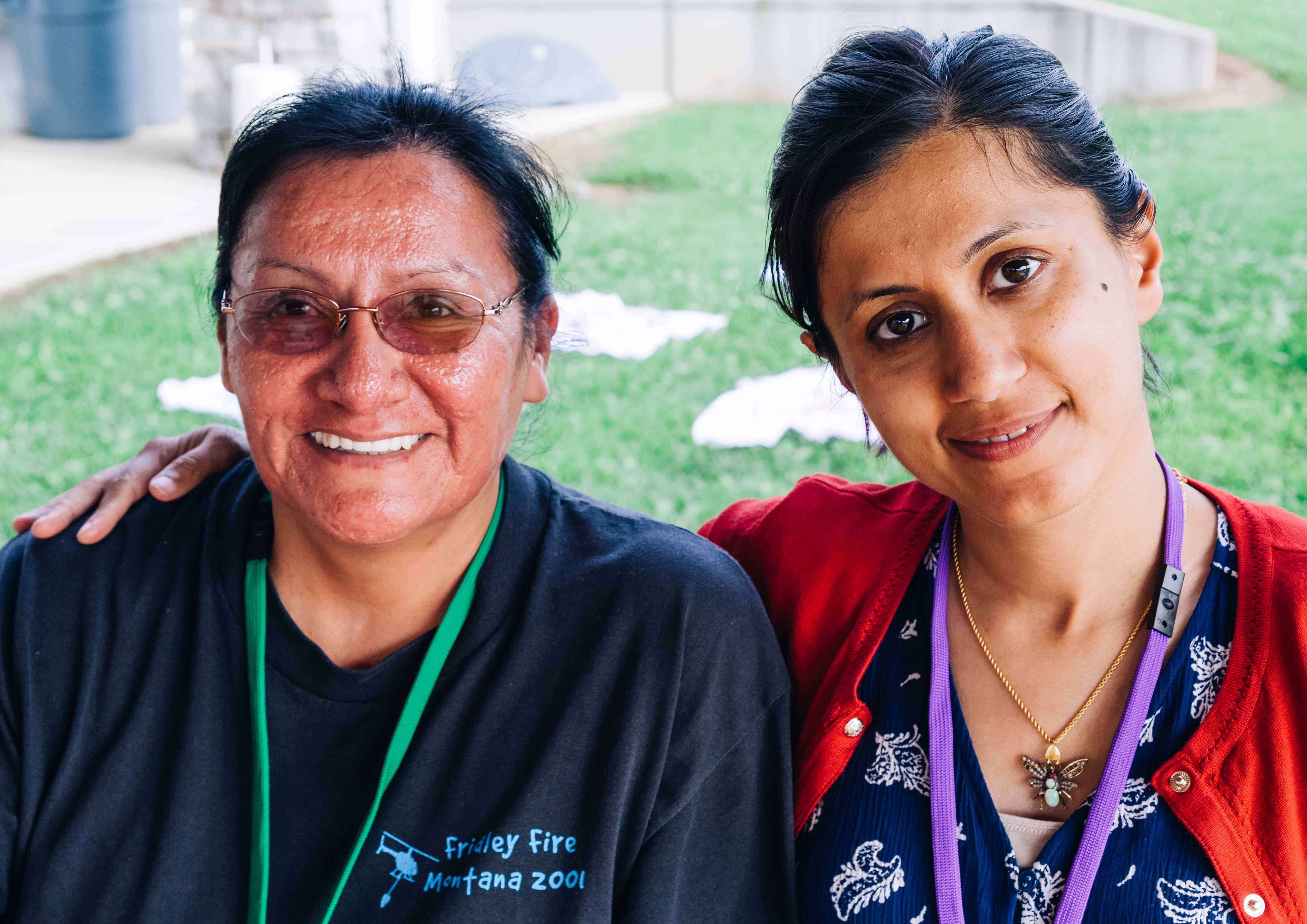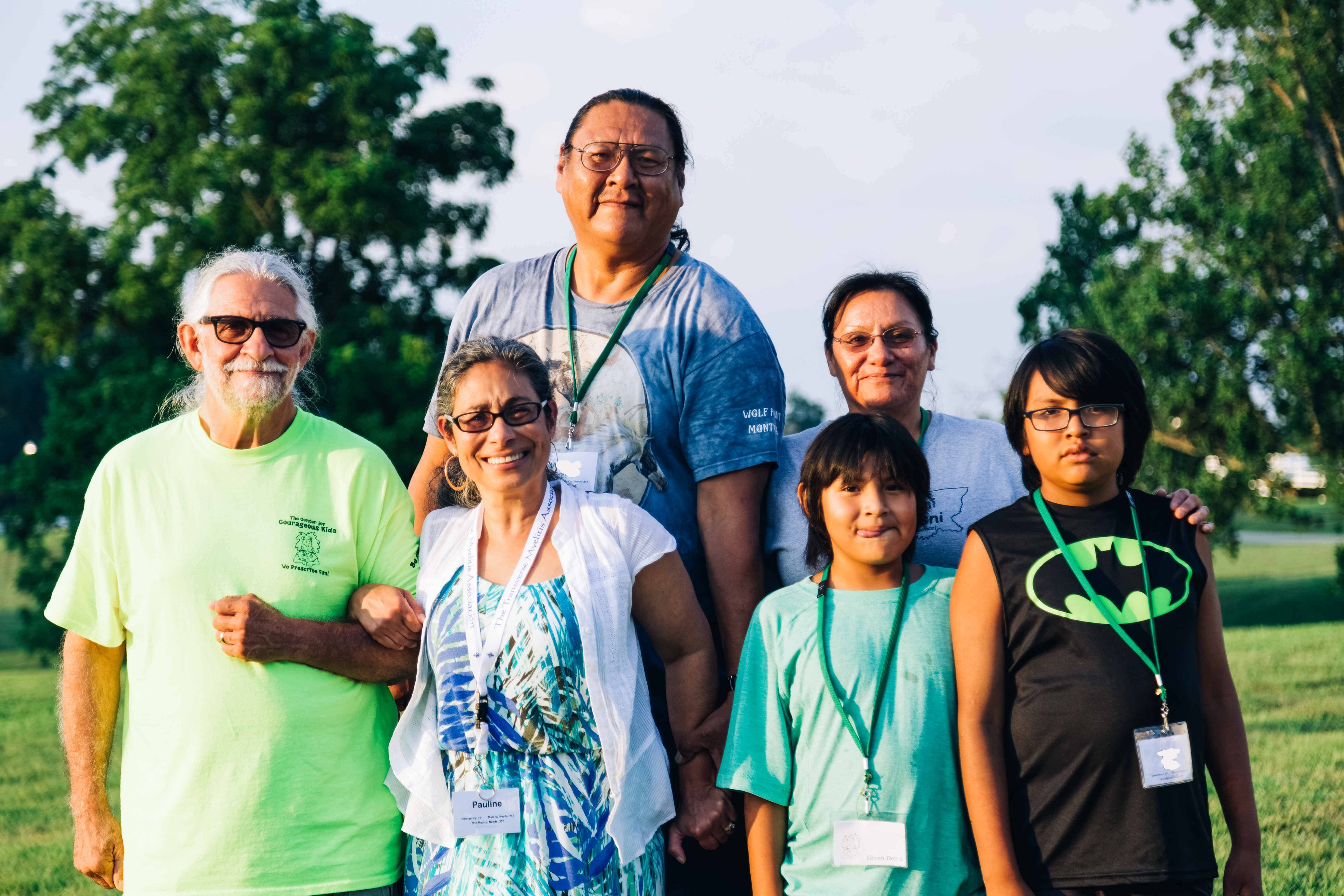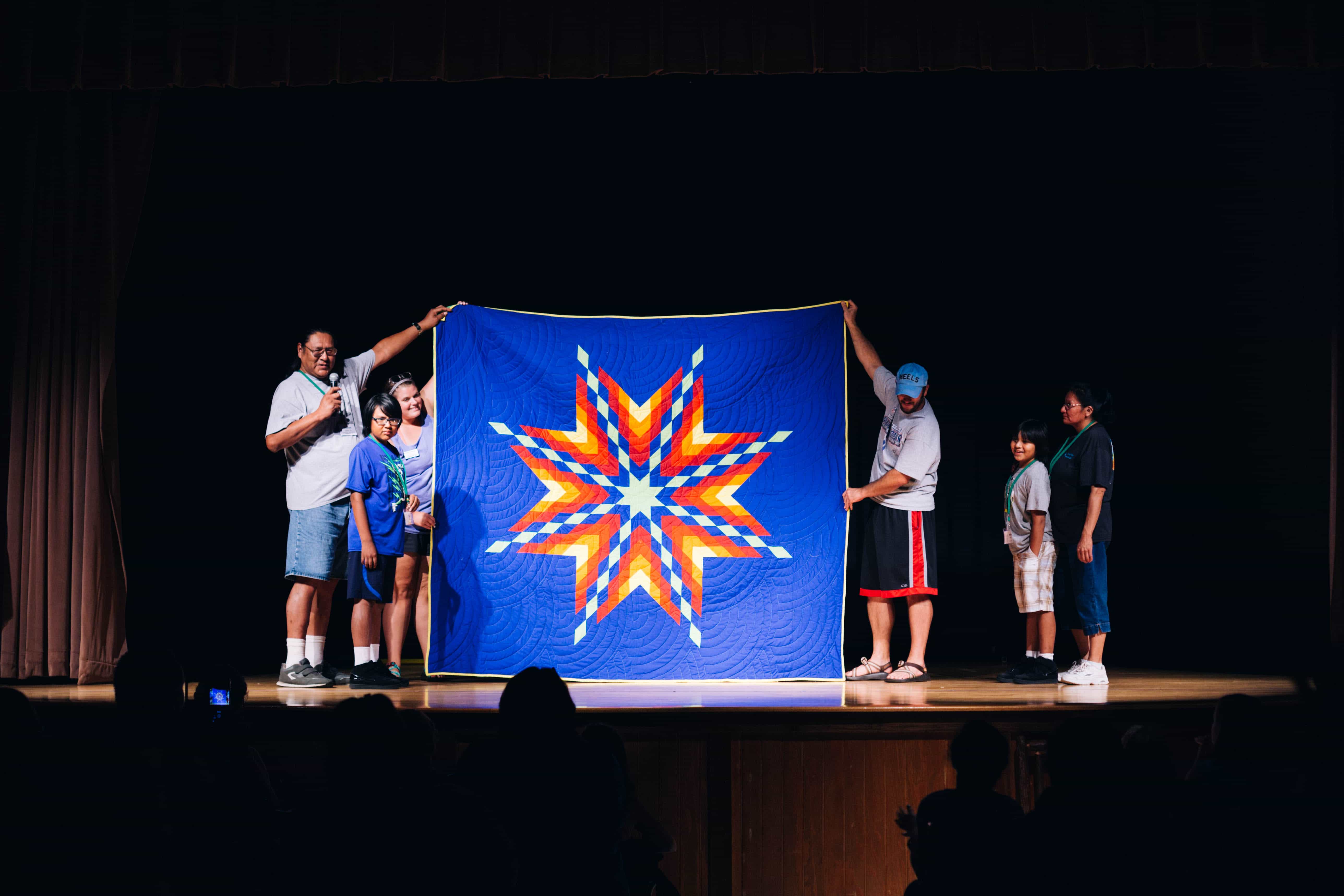Reflections from the 2016 Annual SRNA Quality of Life Camp
Sandy Siegel, President, SRNA
After completing her residency in neurology, Dr. Sara Qureshi did a fellowship in neuro-immunology at the University of Texas Southwestern in Dallas. She studied with Dr. Benjamin Greenberg, one of the leading specialists in TM, ADEM and NMO, director of the TM and NMO Center and board member of SRNA. Sara became a specialist in these rare neuroimmune disorders. Upon completion of her fellowship, Dr. Qureshi began her clinical career at the Billings Clinic in Montana. She is an avid hiker and loves the outdoors; she picked the right place. Through her training and experience, Dr. Qureshi has become an important member of our medical community. She was invited and we were thrilled that she was able to attend camp, which was held this year from July 31-August 4, 2016 at the Center for Courageous Kids in Scottsville, KY. I have been communicating with Sara through emails; this was my first time meeting her.
Working at the Billings Clinic, Dr. Qureshi has patients from the many reservations across Montana, Wyoming, the Dakotas and across the western US. Sara is an excellent doctor and she has a heart the size of Montana. She has been caring for a young boy from the Sioux tribe who has NMO. This is a horrible autoimmune disorder; a person can have multiple inflammatory attacks over time that impact the spinal cord and the optic nerves. This boy has already had 3 attacks at a very young age. Most of the physicians they have been dealing with have been significantly under-informed, and his care had been less than adequate before the family found Dr. Qureshi.
This family lives on the Ft. Peck Reservation in a small community called Poplar. I know Poplar, as I once attended a Halloween pow wow there.
For two years, from 1976 – 1978, I lived in a small community on the Ft. Belknap Reservation; the reservation just to the west of Ft. Peck in northern Montana. I did my dissertation research in Hays as a cultural anthropologist; I lived with the White Clay People and French-Chippewa-Cree or Metis. The reservation was also home to the Assiniboine tribe. In addition to my research, I also taught social studies at the Catholic mission school, I was a bus driver and janitor, I helped with the chickens and the potato plot, I sold bingo cards on Thursday nights, I taught hunting safety through the Montana Fish and Game Department, I served on the public school PTA, I taught anthropology courses through the Intertribal Education Center, and I also taught GED classes. It was an interesting two years. I’m pretty sure that I was the only Jewish person who has served in the Jesuit Volunteer Corp.
Dr. Qureshi wanted this family to come to camp and she worked with them and advocated for them to get there. Dad told me that they drove down on the back roads so that he didn’t put too much wear on his old van. I’m still trying to imagine the back roads from Montana to southern Kentucky. They saw a pretty good chunk of America.
We had a great camp – 30 children with TM, ADEM and NMO – 30 families, including a family from Australia. And of course, we brought Abhijit Ganguly, our support group leader, from Kolkata, India. We had an awesome group of physicians for our education program and all of our James T. Lubin Fellows attended; the 2 who had completed their programs, and the 2 who are just about to begin their two-year fellowships this month.
I make a point of introducing myself to all of the new families – and about half of the families were new this year. And I spend time with the families that I have come to know over the years… Pauline and I love that we have watched most of these children grow up – some of them are starting college and some of them are beginning careers and having families. Totally cosmic.
I made a point of spending time with this family from Montana. They had an awesome time. Their son’s medical care is very complicated because little is known about NMO and he needs to be on an immune suppressant to lessen the chances of more attacks – or to lessen their severity should they happen. They are so fortunate to have Sara in their lives – most people on a reservation would not be receiving the kind of medical care that they are getting from her for a very rare disorder – and it is just a 5-hour drive away… not too bad by Montana standards.
On stage night, this family gave a star quilt to camp to thank camp for their experience. The dad, William, explained that when someone does something good for you, giving them something to thank them is the Indian way; and giving a star quilt is very special. William explained that when his father died, he was pallbearer at the funeral. His mother gave star quilts to each of the pall bearers. It was this star quilt that he was giving to camp. There was not a dry eye in the house. Also, during camp week, Abhijit admired a t-shirt that William was wearing – it had a beautiful drawing of an eagle. William gave the shirt to Abhijit … watching this brought back a lot of memories. If you admire something a person has, they are obligated to give it to you. The Indian way.
On one of the evenings while the families were watching a movie, William and I sat in the dining hall and talked for a few hours. We talked about reservation life and we talked about our lives. I explained to him that while I lived in Hays we became very close with one of the families there. I spoke to him about Ray and Irma and Gordon and Edith. I told him that this family were wonderful singers with a very popular drum that traveled the pow wow circuit across the western states. I told him that Ray and Irma were like parents to me and that Gordon and Edith were like brother and sister. Gordon and Ray taught me a lot about the traditional culture. All of these people have passed away. When I visited Hays a couple of years ago, I made a point of visiting their graves… and I said Kaddish for them.
While I was talking to William about this family, he told me that he knew of them and the Hays Singers. Then I said Gordon’s full name to him, and his eyes opened wide… he told me that Gordon and his father were close friends. After I left Hays, Gordon had spent some time on Ft. Peck – and that is where he became good friends with William’s father. Later, Gordon moved back to Hays, and William’s dad spent time with Gordon in Hays.
Going through these stories and our connections while sitting in the dining hall at camp – a camp that we were attending because our loved ones had one of these disorders… minds blown.
I came to camp expecting the same very emotional experiences we have every year at camp. To have my SRNA-camp life intersect with my reservation life was just not anywhere in my imagination. What a life.
Two photos attached – one of me and William in the camp dining hall and my favorite photograph of Gordon that I took before a basketball game at the mission gym – Gordon was singing a flag song … and he made that hand drum.









